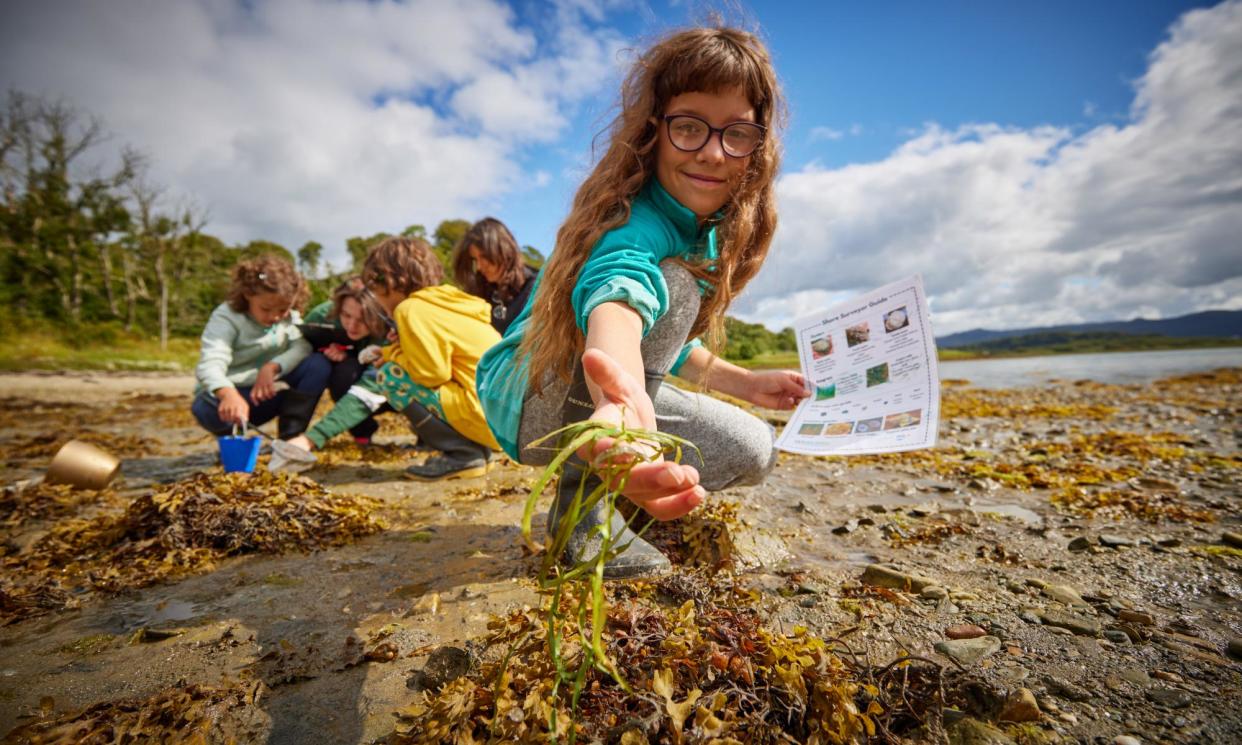From planting seagrass to spotting seals: how to help look after the UK’s coastline

Find a project …
• Get stuck into some slimy stuff with the year-long Big Seaweed Search and help to monitor seaweed biodiversity along UK coastlines, a key indicator of ocean health. Just download the seaweed guide and recording forms and submit your results to
bigseaweedsearch.org.
• If tackling plastic pollution is your thing, you can join beach cleaners worldwide to collect and record plastic particles with the Great Nurdle Hunt (nurdlehunt.org.uk); or help the University of Portsmouth gather pollution data in its Big Microplastic Survey (microplasticsurvey.org); alternatively, find a coastal clean-up near you through the Marine Conservation Society database (mcsuk.org).
• For keen divers and snorkellers alike, citizen science project Seasearch offers free training to help divers identify and record what they spot underwater, contributing to a national effort to track the UK’s marine biodiversity at seasearch.org.uk.
• Seagrass meadows themselves are powerhouses of biodiversity and sequester tons of carbon, too; you can join the movement to help restore the UK’s wild meadows with Seawildling Scotland, which welcomes volunteers to help plant and survey wild meadows at Loch Craignish (seawilding.org).
• The Wild Oyster Project is trying to bring back the UK’s once vast oyster reefs, and invites volunteering, school and family groups to visit its restoration sites in England, Scotland and Wales, where you can pitch in to help conserve the fledgling reefs
(wild-oysters.org).
• Keen rock poolers, take a look at the Rockpool Project, choose one of three survey guides, and record your finds at more than 70 coastal sites across the UK (therockpoolproject.co.uk).
• Surfers Against Sewage has created the Ocean School, aimed at young nature-lovers, with a trove of free resources, classes and activities to get kids engaged with the sea
(sas.org.uk).
• Turn your coastal sightings into citizen science by helping to monitor seabirds with the British Trust for Ornithology (bto.org), seals with the Dorset Wildlife Trust (seals.dorsetwildlifetrust.net), cuttlefish with the Cuttlefish Conservation Initiative (cuttlefishconservation.com), seahorses with the Seahorse Trust (theseahorsetrust.org), and even turtles with the Marine Conservation Society (mcsuk.org).
Where to visit …
• With a recent £11.6m injection from the National Lottery Heritage Fund, Plymouth will soon be home to the UK’s first national marine park, focused on connecting people with nature, restoring local salt marsh and seagrass habitat, and rehabilitating coastal landmarks such as Plymouth’s art deco seaside lido (plymouthsoundnationalmarinepark.com). The project is still in the early phases, but for the time being you can visit the local National Aquarium, the UK’s largest charitable aquarium, run by the Ocean Conversation Trust and focused on marine education (national-aquarium.co.uk).
• Down in Devon, catch a wave or just enjoy the view at the UK’s first surfing reserve, established by Save the Waves, a nonprofit that works to protect places where wave ecosystems overlap with hotspots of marine biodiversity (savethewaves.org).
• Head to the protected waters of Portelet and Bouley Bay around the island of Jersey, home to rare cold-water corals and kelp forests, and follow self-guided snorkel trails provided by the Blue Marine Foundation (bluemarinefoundation.com). Or scope out the self-guided trails on offer from the Scottish Wildlife Trust (scottishwildlifetrust.org.uk).
• A bit farther afield, this year the Outer Hebrides wildlife festival returns between 22 and 29 June, with a fringe festival running throughout July, a celebration of coastal ecosystems with guided beach walks, wildlife surveys, exhibitions, and boat, surfing and snorkelling trips (outerhebrideswildlifefestival.co.uk).
• Head to the Norfolk seaside towns of Horsey and Winterton to see one of the largest grey seal colonies in the UK: thousands of baby seals are born here during pupping season from November to January, a spectacle that you can observe from a safe distance on the surrounding dunes. The animals are protected by Friends of Horsey Seals, which can also arrange guided walks (friendsofhorseyseals.co.uk).
• Summer is the prime time to spot bottlenose dolphins in Cardigan Bay, Wales: the area is home to the largest resident population of these animals in the UK, with many boats running dolphin-watching trips out into the Irish Sea. But you could just as well head to the bay of Mwnt, climb the hill overlooking this protected cove, and spot these playful animals from on high (welshwildlife.org).


